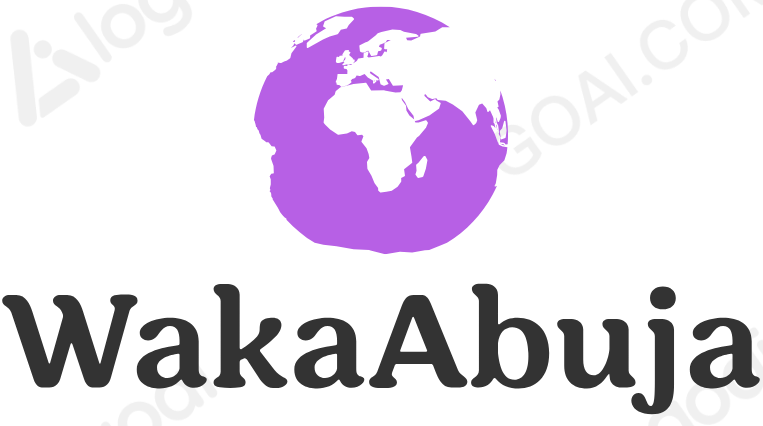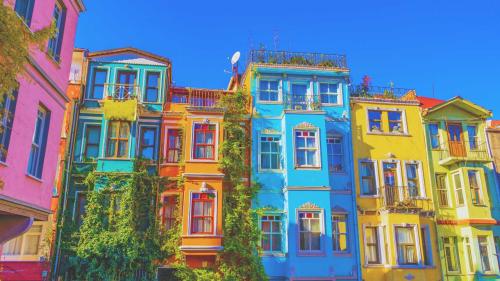These 15 neighborhoods redefine what it means to be cool today, whether you’re a seasoned traveler, digital nomad, or curious wanderer. Each location offers its own irresistible vibe, from revitalized urban districts to bohemian enclaves buzzing with art, food, and authenticity. I have walked their streets, spoken with locals, and soaked up their rhythms. How are they different from each other? Rather than being trendy, they’re transforming how we live, connect, and explore.
What Defines a “Cool” Neighborhood Today?
Let’s take a moment to talk about what cool means to us at the moment before we get started:
Authenticity over polish: It’s not about five-star hotels, but five-star community vibes.
Culture on every corner: Street art, underground galleries, and independent music scenes.
Global-local fusion: Places that blend cultural heritage with modern influence.
Walkability and lifestyle: You can feel the rhythm on foot or by bike.
A sense of belonging: You don’t have to be a local to feel at home.
1. Shimokitazawa – Tokyo, Japan
The Bohemian Heartbeat of Tokyo
If Tokyo is a futuristic neon dream, then Shimokitazawa is the city’s analog soul. Tucked west of Shibuya, this labyrinthine neighborhood feels like Tokyo’s last true indie stronghold. I got lost for hours hopping between secondhand shops, ramen joints, and micro-bars no wider than my arms.
Why It’s Cool Now:
Since the recent rail redevelopment, Shimokitazawa has become even more walkable, mixing its vintage charm with modern eco-buildings.
Pros:
Incredible thrift culture
Local live music scene
Cafés with a creative edge
Cons:
Crowds on weekends
Limited English signage
2. Poblenou – Barcelona, Spain
Where Industry Meets Innovation
Imagine sipping natural wine in a repurposed warehouse while digital nomads code beside you. That’s Poblenou—Barcelona’s tech-arts hybrid. Once an industrial wasteland, it’s now home to creative studios, design hubs, and art collectives.
Why It’s Cool Now:
The 22@ urban renewal project transformed Poblenou into a testbed for smart cities—without losing its Catalan soul.
Pros:
Digital nomad-friendly
Excellent beachfront access
Design-forward cafes and galleries
Cons:
High rent prices creeping in
Still in flux—construction ongoing
Links:
Visit Barcelona
3. Mar Mikhaël – Beirut, Lebanon
Grit, Glory & Gritty Comebacks
In the wake of unimaginable tragedy, Mar Mikhaël continues to rise—this time as a symbol of resilience. When I visited in early 2025, the art scene was quietly thriving again, and speakeasies buzzed with late-night debates.
Why It’s Cool Now:
Despite political and economic challenges, the community continues to support local artists, chefs, and musicians.
Pros:
Fierce local pride
Powerful street art
Affordable by Western standards
Cons:
Infrastructure issues
Unstable power supply
Links:
Beirut.com
4. Silver Lake – Los Angeles, USA
Where Hipsters Grew Up (and Leveled Up)
Once the poster child for “too cool to care,” Silver Lake has matured beautifully. Think wellness studios, gender-inclusive barbershops, and wine bars with poetry nights.
Why It’s Cool Now:
Silver Lake proves you can be both grown-up and groovy.
Pros:
Inclusive and progressive
Beautiful urban hikes
Hidden rooftop dining spots
Cons:
Pricey rent
Increasingly polished
Links:
Discover LA
5. Kampung Baru – Kuala Lumpur, Malaysia
Traditional Roots in a Sky-Scraping City
I was stunned the first time I saw wooden stilt houses standing defiantly beneath Kuala Lumpur’s high-rises. Kampung Baru is the city’s Malay soul—now being lovingly restored and spotlighted as a cultural gem.
Why It’s Cool Now:
There’s an effort to preserve its identity while showcasing it as KL’s living museum.
Pros:
Authentic Malaysian food
Photogenic contrast with modern KL
Community-led markets
Cons:
Some resistance to change
Traffic can be intense
Links:
Tourism Malaysia
6. Ridgewood – Queens, New York, USA
Brooklyn’s Quieter, Quirkier Cousin
Everyone talks about Bushwick or Williamsburg, but Ridgewood is where the artists went to breathe. With a mix of Eastern European heritage and DIY art vibes, this is the borough’s best-kept secret.
Why It’s Cool Now:
It’s a cultural blender of old New York and new perspectives—without the suffocating hipster hype.
Pros:
Amazing Polish bakeries
Less crowded than Brooklyn
Strong artist residency scene
Cons:
Limited nightlife
Slower subway access
Links:
NYC & Company
7. Barranco – Lima, Peru
Peru’s Answer to Lisbon
Barranco offers that sweet spot between seaside serenity and wild creativity. The pastel houses, cliffside views, and explosion of murals create a sense of dreamy nostalgia.
Why It’s Cool Now:
It’s Lima’s hippest neighborhood, but also its most soul-filled.
Pros:
World-class ceviche bars
Oceanfront walking paths
Galleries everywhere
Cons:
Can feel touristy
Pricey Airbnb stays
Links:
Visit Peru
8. Canggu – Bali, Indonesia
Not Just for Surfers Anymore
I stayed in Canggu for two months—and it completely redefined balance for me. You’ll meet barefoot yogis, startup founders, tattoo artists, and surfers… all at the same vegan brunch table.
Why It’s Cool Now:
It’s where Bali’s beach spirit fuses with coworking, crypto, and slow living.
Pros:
Healthy food culture
Remote work ecosystem
Yoga studios and surf schools
Cons:
Traffic congestion
Overdevelopment concerns
Links:
Wonderful Indonesia
9. Zürich West – Zürich, Switzerland
Clean, Green, and Creatively Rebellious
Once an industrial backwater, Zürich West is now a sustainability-driven, design-led wonderland. The locals call it “Züri West”—and it’s unlike anywhere else in Europe.
Why It’s Cool Now:
Circular design principles, social housing projects, and pop-up concepts everywhere.
Pros:
Eco-living at its best
World-class public transport
Design-led cafes and spaces
Cons:
Very expensive
Quiet nightlife
Links:
Zürich Tourism
10. Maboneng – Johannesburg, South Africa
Africa’s Urban Rebirth Story
Maboneng, meaning “place of light,” is a regeneration success. Where others saw decay, creatives saw potential—and built a community bursting with murals, art markets, and pan-African gastronomy.
Why It’s Cool Now:
One of the most inspiring urban renewal stories on the continent.
Pros:
Strong community-led economy
Cultural tours & walking art routes
Authentic African fashion & cuisine
Cons:
Some security concerns at night
Still developing infrastructure
Links:
South Africa Tourism
11. Fitzroy – Melbourne, Australia
Melbourne’s Iconic Creative Hub
I’ve lost count of how many times Fitzroy’s streets have inspired me. This neighborhood is the beating heart of Melbourne’s street art scene, indie music, and café culture. Every corner feels like a living gallery, and the local bars have a warmth you can’t fake.
Why It’s Cool Now:
Despite gentrification, Fitzroy keeps its rebellious spirit alive with a strong commitment to grassroots culture and live music.
Pros:
Unmatched street art and galleries
Eclectic food scene (vegan and meat-eaters alike)
Diverse, inclusive community vibe
Cons:
Rising living costs
Crowds during events and weekends
Links:
Visit Victoria
12. Jardin de la Reina – Havana, Cuba
Cuba’s Hidden Tropical Jewel
Not your usual tourist trap, Jardin de la Reina offers a rare blend of tropical seclusion and rich Cuban culture. I found locals eager to share stories of the old Havana while showing off spectacular coral reefs just offshore.
Why It’s Cool Now:
With Cuba cautiously opening up, this neighborhood balances untouched nature with cultural authenticity.
Pros:
Stunning natural environment
Traditional Cuban music and dance
Authentic local cuisine
Cons:
Limited infrastructure
Internet access can be spotty
Links:
Havana Travel Guide
13. Kreuzberg – Berlin, Germany
Berlin’s Edgy, Ever-Evolving Playground
Kreuzberg has long been synonymous with underground culture, political activism, and boundary-pushing art. Walking through its streets, I felt the pulse of history mixed with cutting-edge tech startups and vegan food trucks.
Why It’s Cool Now:
Despite rising rents, Kreuzberg thrives as Berlin’s creative and social experiment hub.
Pros:
Diverse, multicultural scene
Vibrant nightlife and cafés
Historic landmarks intertwined with street art
Cons:
Noise levels can be high
Crowded during festivals
Links:
Visit Berlin
14. Wynwood – Miami, USA
From Warehouses to World-Class Street Art
When I first visited Wynwood, it was an artist’s secret; now, it’s an international hotspot. The neighborhood’s transformation is breathtaking: endless murals, chic galleries, and buzzing breweries.
Why It’s Cool Now:
Wynwood balances its arty roots with Miami’s flair for luxury and entertainment.
Pros:
Legendary street art festivals
Craft breweries and food halls
Proximity to Miami Beach
Cons:
Tourist-heavy on weekends
Parking can be a nightmare
Links:
Wynwood Walls Official
15. La Condesa – Mexico City, Mexico
Mexico City’s Stylish, Green Oasis
I fell in love with La Condesa’s tree-lined streets, art deco architecture, and vibrant café culture. This is the neighborhood where you can sip mezcal in a rooftop bar by day and dance to live Latin jazz by night.
Why It’s Cool Now:
Its reputation as a safe, stylish, and creative district keeps growing among locals and expats.
Pros:
Bustling food scene (from street tacos to gourmet)
Lush parks perfect for strolls and people-watching
Friendly, cosmopolitan crowd
Cons:
Traffic congestion during peak hours
Higher living costs than other Mexico City neighborhoods
Links:
Mexico City Tourism
FAQs About the Coolest Neighborhoods in the World
Q: How do I choose the coolest neighborhood to visit?
Think about what culture you want to immerse in: art, food, music, or innovation? Also, consider your budget and travel style. I recommend spending at least a few days to soak in the local vibe beyond the tourist highlights.
Q: Are these neighborhoods safe for solo travelers?
Most of these neighborhoods have safe, walkable areas, but always stay alert and follow local advice. Some, like Mar Mikhaël in Beirut or Maboneng in Johannesburg, may have areas best explored with locals or guides.
Q: Can I live in these neighborhoods long term?
Absolutely. Many, like Canggu or Fitzroy, have growing remote-work communities and amenities that support longer stays. Research visa rules and cost of living beforehand.
Q: What’s the best time to visit these neighborhoods?
Timing depends on the city climate and cultural events. For example, Wynwood’s art festivals happen annually in February/March, while La Condesa is pleasant year-round except for summer rains.
Final Thoughts
I’ve traveled extensively and these neighborhoods stand out because they reflect more than just a trend—they’re blueprints for future urban living. They marry community, creativity, and culture while embracing change with a human touch.
If you’re planning a trip, a move, or just want to explore virtually, use this list as a gateway to discover places where the world’s coolest energy is happening right now.
Disclaimer
WakaAbuja has made every effort to ensure that the information in this post was correct at the time of publication. However, we do not assume any liability caused by errors such as pricing, hours, or location details. Please consult official websites or social media pages for the most up-to-date information.



